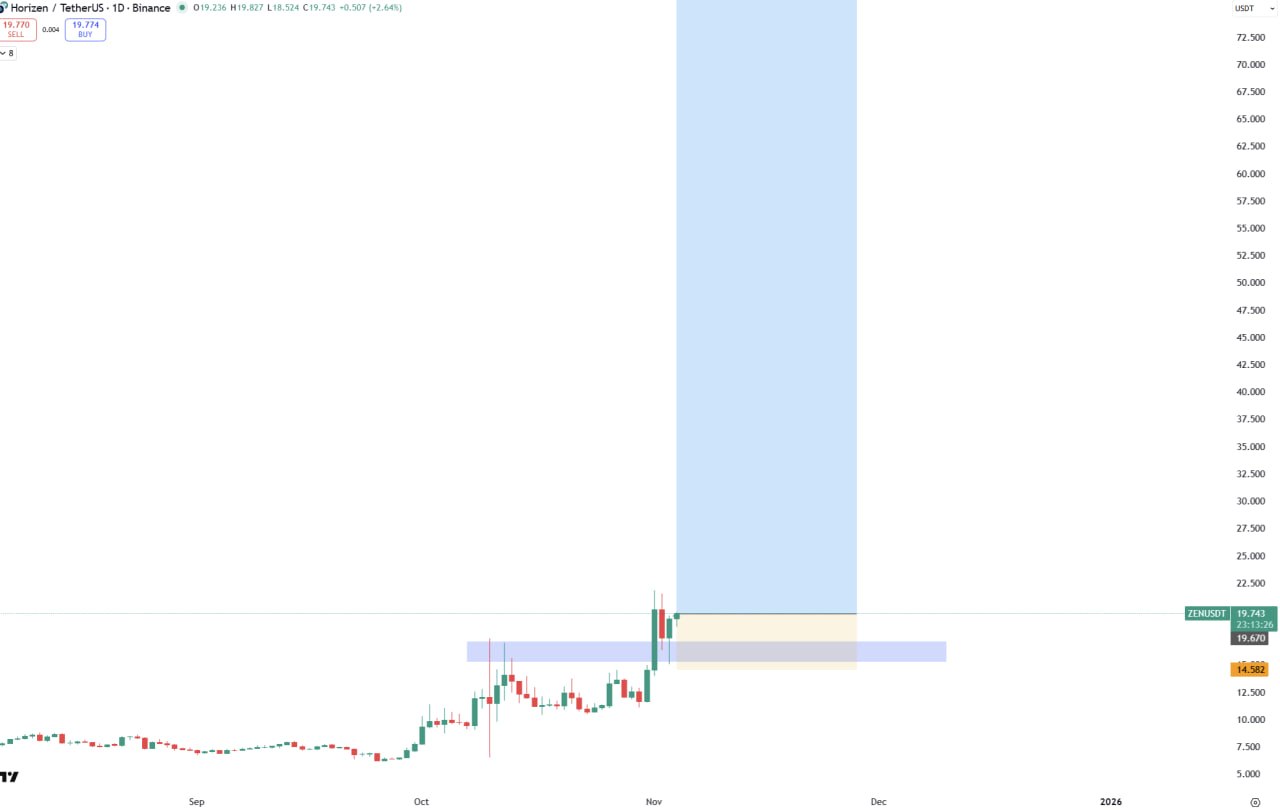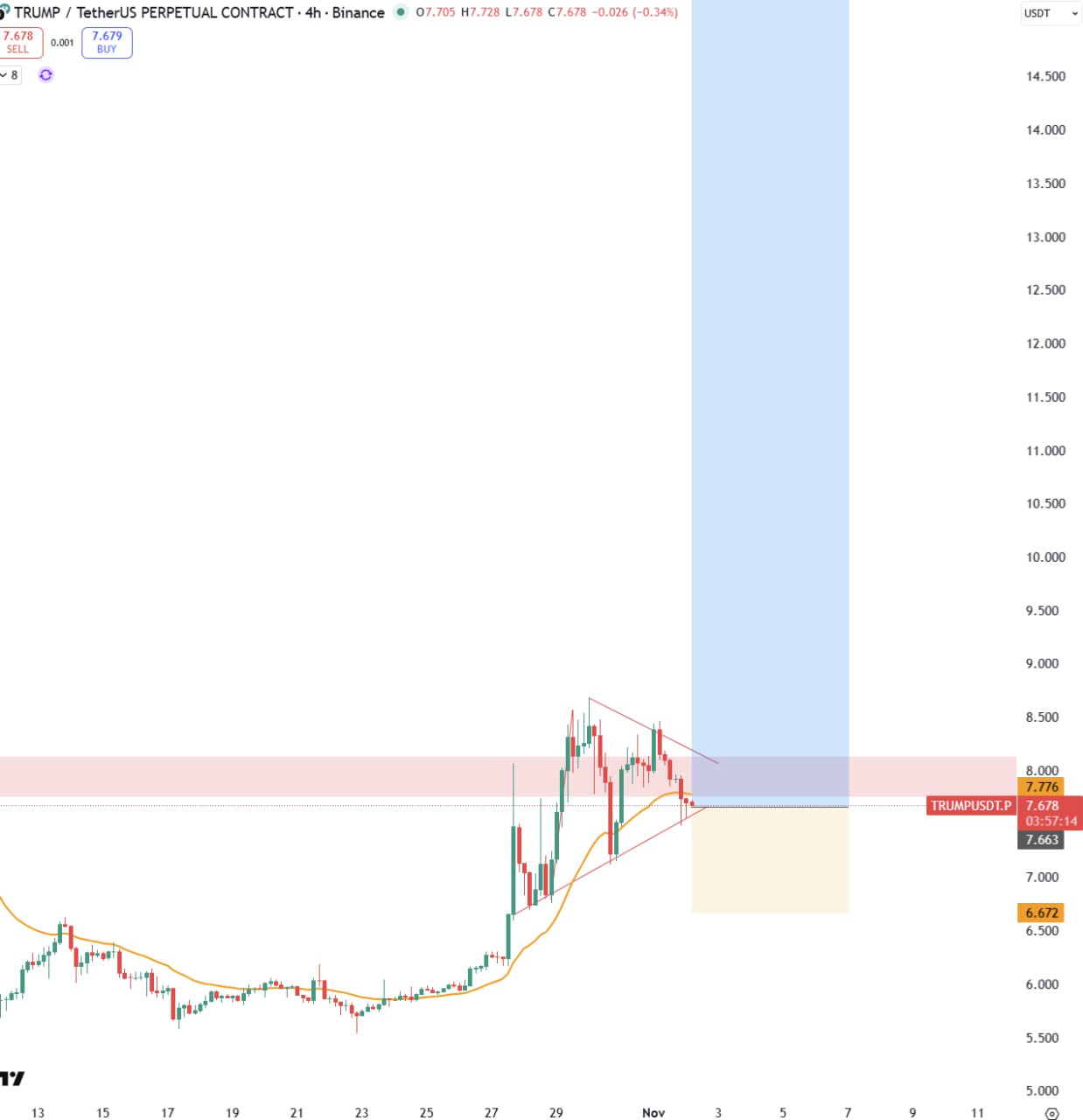ZEN/USDT.P — Long
2025-11-03 18:49
Long ZEN at 19.72 aiming for 25, 28, 32 with invalidation below 14.58.

If the TradingView symbol is unavailable, use the annotated image as reference for target zones & invalidation.
ZEN/USDT.P Long Trade Signal — November 3, 2025
This campaign targets a long in ZEN near 19.72, scaling profits at 25, 28, and 32, with a hard stop at 14.58. ZEN (the native asset of the Horizen ecosystem) has historically oscillated between quiet building phases and sudden expansions when infrastructure or ecosystem news hits. The present structure shows a transition from distribution to accumulation and a fresh attempt to reclaim higher value. Our objective is to monetize that turn without romanticizing it.
Market Context
Crypto’s risk appetite has been episodic. When volatility in majors compresses, capital hunts for asymmetry in mid-caps with credible roadmaps. Horizen’s multi-chain architecture and EVM-compatible components (e.g., EON) keep ZEN in that conversation. From a flow perspective, books have thickened compared with prior quarters, but liquidity still thins during off-hours; leverage participation can amplify both rallies and drawdowns. Hence, the plan front-loads derisking and sees the upper targets as possible only if acceptance persists and order books continue to improve.
Correlation to privacy or modularity narratives can change quickly. Rather than predicting which narrative dominates next, we anchor on structure: if reclaimed levels hold and volume expands on breakouts with balanced funding, the path of least resistance carries toward the next supply band; if not, we accept base hits and step aside.
Technical Analysis
Structure: Following a prolonged down-channel, ZEN printed a rounded base in the mid-teens and pushed through the 18–20 resistance zone, with acceptance above 19 signaling control shifting toward buyers. The next heavy shelf aligns with 25 (former breakdown area), then 28 (composite supply pocket), and 32 (prior pivot/round-number magnet). Notably, pullbacks into 19–20 have been absorbed, leaving higher-low footprints on the 4H.
- Trend: 4H trend has flipped to higher highs and higher lows; daily trend is turning up after months of grind.
- Momentum: Each push has produced constructive consolidation (time-based digestion rather than sharp retrace), a hallmark of healthy trend formation.
- Volume: Upside bursts are accompanied by rising participation; resting liquidity is no longer vanishing at first stress—another constructive tell.
- Liquidity: Depth supports size during US/EU hours; weekends/off-hours remain thin—calibrate order types accordingly.
Key Levels & Plan
- Entry: 19.72 (tolerance 19.55–19.90)
- Targets: 25 → 28 → 32
- Stoploss: 14.58 (beneath base failure; breach invalidates swing)
- Support: 19–20 (retest shelf), 17.6–18.2 (secondary), 15.2–15.8 (deep support)
- Resistance: 24.5–25.5, 27–28.5, 31–33
Execution Roadmap
- Enter on a pullback that respects 19–20 and confirms with a 1H close back above 19.6–19.7.
- Take TP1 at 25 to derisk; if 25 holds as support on closes, advance stop beneath the most recent 1H higher low.
- Scale at 28; if breadth remains strong and funding is tame, keep a small runner toward 32 with a structure-based trailing stop.
- Should price fail twice at 25 with negative CVD and rising OI (fresh shorts), reduce exposure and wait for a cleaner rebuild.
Risk Management
Distance from 19.72 to 14.58 is meaningful; size the position so that a stop-out fits your risk budget. Avoid adding into resistance; add only on pullbacks that respect higher-low structure. Use bracket orders to avoid hesitation in fast markets. After TP1, think like a risk manager: protect paid gains while allowing a small portion to participate in extension.
- Keep leverage moderate; place liquidation far below the hard stop.
- Use limit orders around levels to contain slippage.
- Honor a max daily drawdown (e.g., −2R). Stand down if reached.
- Do not average down below invalidation—re-entries require rebuilt structure.
This analysis is informational and educational. It is not financial advice. Derivatives involve substantial risk, including slippage and gaps beyond stops.








